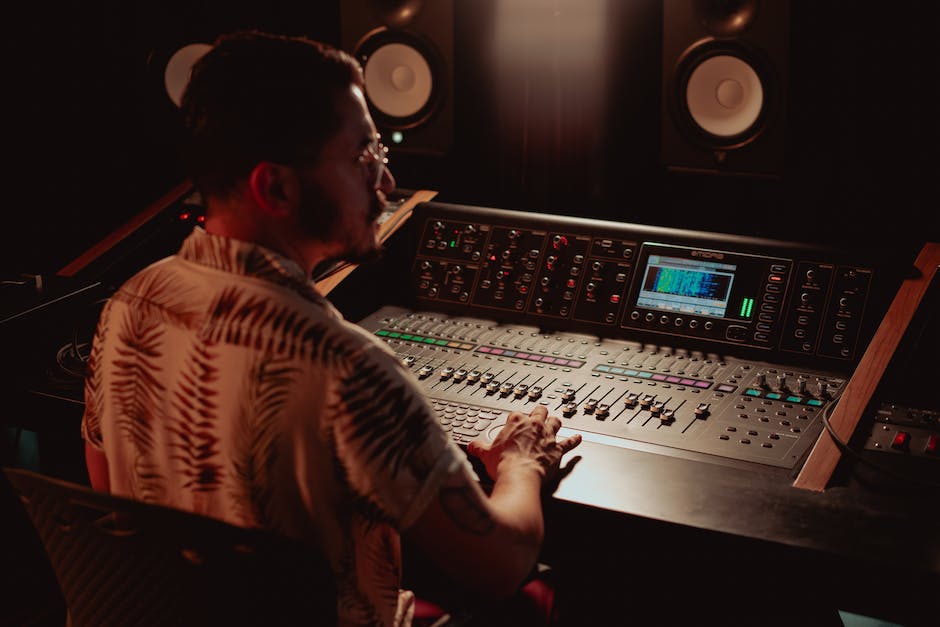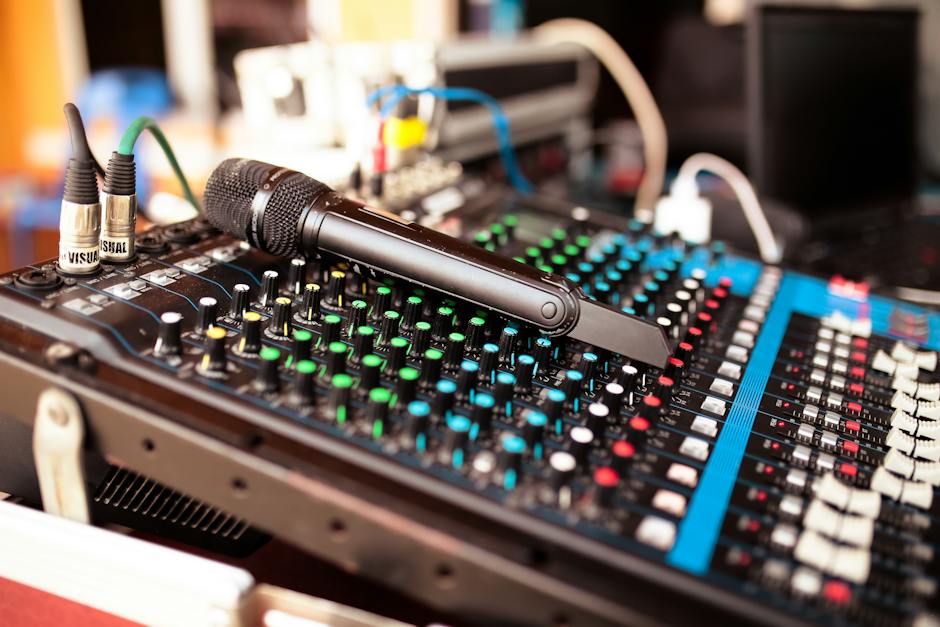The art of recording vocals extends beyond simply having a good voice and a high-quality microphone. It requires a deep understanding of various components integral to vocal recording like different types of microphones and their most effective uses, acoustics of the recording space and its setup, as well as post-production steps such as sound editing and mixing. Whether you are an aspiring singer, a budding podcaster or an established voice-over artist, the journey towards recording crystal clear vocals is one that involves mastering these various facets, which are essential to deliver a top-notch vocal output.
Microphone Techniques
Title: Striking The Right Note: Effective Microphone Techniques For Crystal-Clear Vocals
In the symphony of music creation, the melody of vocals often reign supreme. The singer is the storyteller, transforming lyrics into raw emotion, their breathes and pulses painting a vivid soundscape. If you’ve ever bathed in the ethereal notes of an immaculate vocal performance, then you understand the importance of clear, powerful vocals. As the pinnacle of this harmonic hierarchy, vocals deserve an unblemished platform for their performance. So, how can one achieve this? The answer lies in mastering effective microphone techniques.
Firstly, any maestro of sound understands that the selection of the microphone is as crucial as a composer choosing the right instrument for their composition. For vocals, dynamic microphones prove to be a trusted ally for live performances. These stalwarts of the sound world offer durability and can withstand the full vocal force produced, while condenser microphones offer a delicate touch, preserving the subtleties of the human voice for studio recordings. Much like a music festival, where every genre has an optimal stage, each vocal style has a microphone match, ensuring clarity and perfection.
Second on the composition sheet is the aspect of microphone positioning. The distance between the microphone and the mouth creates a dance of sound and silence, with slight variations leading to a drastic change in the final output. Close up, an intimate whisper or Diana Krall-style jazz; a few inches away, a roaring rock ballad. Analyze the genre, the emotion that you’re weaving into the rhythm, and then stage your microphone appropriately.
One technique often used by the vocal virtuosos is the Angle Approach. An angled microphone tends to catch imbalances in tonality and dissipate plosive sounds that chop the flow of melody. Be it a fervid folk performance or a summer night serenade, the Angle Approach remains a tried-and-true method to ensure vocal clarity.
Implementing strategic Pop Filters further polishes vocal performance, acting as a guard against harsh consonants that create unwanted distortion. A pop filter’s intrinsic function is to gently cradle the sound of each word and present it as a smooth composition, easy on the listener’s ear.
Last but certainly not least in this arrangement of microphone techniques is Gain-Setting. Controlling the microphone gain effectively serves as an expert conductor leading an orchestra. It meticulously manages the volume levels avoiding overpowered resonating noise or a barely audible lament. Proper gain setting lets your vocals carve their space in an ensemble, presenting them in their best light, their clearest note.
As in a musical journey where you hop from one music fest to another, savoring different genres and appreciating the magic of music, understanding and learning microphone techniques is a road to be traveled. Picking up nuances, experimenting, and eventually finding your vessel to the world of crystal-clear vocals. So, embrace the challenge, for in the end, the raw emotion of your voice, the tale that your melodies tell, will resound with stunning clarity, wrapping your audience in the spellbinding beauty of music.

Room Acoustics and setup
The Sonic Canvas: The Integral Role of Room Acoustics and Setup in Capturing Pristine Vocals
Moving beyond the vital aspects of microphone selection, positioning, and gain-setting, the succeeding frontier in achieving stellar vocal recordings lies with room acoustics and setup. In the same way an artist carefully selects the canvas for their masterpiece, musicians and sound engineers must pay keen attention to the aural realm the vocals will inhabit.
Room acoustics has a profound impact on the vocals’ overall sound. At its core, acoustics refers to how sound behaves within a specific space—the way it travels, reflects off surfaces, and ultimately reaches the receiver’s ears. For studio recording, the “receiver” is the microphone, acting as a discerning ear imbued with the power to make or break the sound of your recordings.
When crafting the ideal vocal recording environment, it’s all about achieving a balance between absorption and diffusion. Too much absorption can make a room sound ‘dead,’ lacking in the natural ambience that gives vocals an organic feel. Excess diffusion, conversely, sends sound bouncing randomly around the room, potentially causing distracting echoes or a muddy audio quality. The ultimate goal, then, is to reach the ‘goldilocks zone’ – a space that is not too live, yet not too dead, just right for capturing clear, pure vocals.
Getting this balance requires an acoustic treatment – a process that entails the strategic positioning of absorption and diffusion materials within the room. Absorption materials, like foam or fabric panels, “soak up” sound waves to minimize echo, while diffusers scatter sound, preventing it from concentrating on a single spot. Typically, absorbent materials are set up at reflection points where sound waves are likely to bounce off, while diffusers occupy other sections of the wall to create a uniform, well-balanced sound field.
Another critical element of room setup is the recording booth’s location. For those without a dedicated booth, finding the quietest part of the house or studio devoid of external noise like traffic, machinery, and chatter is crucial.
Additionally, the vocalist’s position matters. Singing into a corner or toward a flat wall can rebound sound waves back into the microphone, causing audible, undesirable effects. Aiming vocals into an open space or toward a diffuser can help mitigate this phenomenon.
Lasty, take heed of the elements in your room that might unexpectedly contribute to acoustics. Bookshelves stacked with books make for excellent diffusers due to their irregular shapes. On the flip side, large, flat surfaces—like tables or uncovered hardwood floors—can bounce sound around unpredictably. Some improvisation (like adding a rug or positioning baffles) might be needed to dampen unwelcome reflections.
All in all, evoking sheer musical genius goes beyond the lyrics and melody. It extends to the intricacy of sound capture, heralding an overlooked art born of the harmonious marriage of technology, physics, and an unyielding quest for musical perfection.

Sound Editing and Mixing
Taking all that into consideration…
It’s time to journey forward into the realm of sound editing and mixing, where the core of vocal clarity comes alive. This process is equally critical as these two complementary processes help shape raw vocal recordings into polished, resonating masterpieces.
Just as a sculptor carefully chisels away at a block of stone to reveal the hidden figure within, sound editing is the initial stage where the unnecessary elements of the recording are trimmed away. Breath sounds and other track noises, although natural during live performances, can be a distraction in recorded music. Silence or the reduction of these sounds in the editing process means that the essence of the vocalist’s delivery has undivided attention, shining in clarity and purity.
Further refining the vocal sound, the process of equalization (EQ) plays a significant role. It adjusts the balance of all frequency components in the audio recording, ensuring that the mid frequencies, which usually carry the bulk of the vocal content, don’t outshine the lower (bass) and higher (treble) ranges. This ensures the final output preserves the original richness, warmth and sparkle essential to a well-rounded vocal sound.
Next, compression becomes a potent tool to elevate the consistency of the vocal track. By narrowing the dynamic range – the gap between the loudest and softest part – compression makes sure the delivery is more uniform. This way, even the quietest whispers will be as audible as the powerful choruses, granting each word, phrase, and note the listener’s full attention. Consequently, vocals emerge clear, intimate, and impactful.
Sound editing also embraces the application of pitch correction tools in a developmental and understated way. Skillfully used, auto-tune isn’t about perfecting every note, but more about subtle adjustments. It ensures that the vocals sit comfortably within the tonal landscape designed by the music, bolstering the overall musicality without sacrificing the unique character of the singer’s voice.
Sound mixing, on the other hand, is where the vocals’ clarity synchronizes harmoniously with other musical elements. Relationships are built between the vocals and other tracks. It’s a quest to ensure that the vocals emerge as a dominant force to stir emotions, yet simultaneously allowing the synergy of backing instrumentals to dance in the listener’s ears.
Reverb and delay effects work to design a ‘sonic space’ around the vocals, making them seem located within a three-dimensional landscape, rather than sitting flatly on top of the mix. Careful panning of backing vocals or instrumental elements opens up space, allowing the main vocal track to command the center-stage while maintaining a rich and immersive audio experience.
In summary, while many factors contribute to the sourcing and capturing of great vocals, it’s in the subtle craft of sound editing and mixing where the artist’s voice genuinely finds its form. This delicate process is not simply a technical necessity, but an art in itself, a sonically woven tapestry that amplifies the emotional resonance and crystalline clarity of what it means to sing, to express, and to be heard.

Taking the journey through varied realms of vocal recording, from understanding the appropriate use of microphones, to creating a conducive environment with optimized room acoustics, and finally, the harnessing of sound editing and mixing techniques, we can see that producing crystal clear voice isn’t a result of chance, it is an art. It is the outcome of a deliberate combination of industry knowledge, the right equipment, and meticulous preparation. Once you grasp these aspects, then the path towards capturing vocals, that are not just audibly pleasing but also brimming with clarity, becomes increasingly achievable. Through this progressive exploration, the insight gained, enables us to appreciate the nuanced intricacies present in the process of recording impeccable vocals.

Comments.
Currently there are no comments related to this article. You have a special honor to be the first commenter. Thanks!